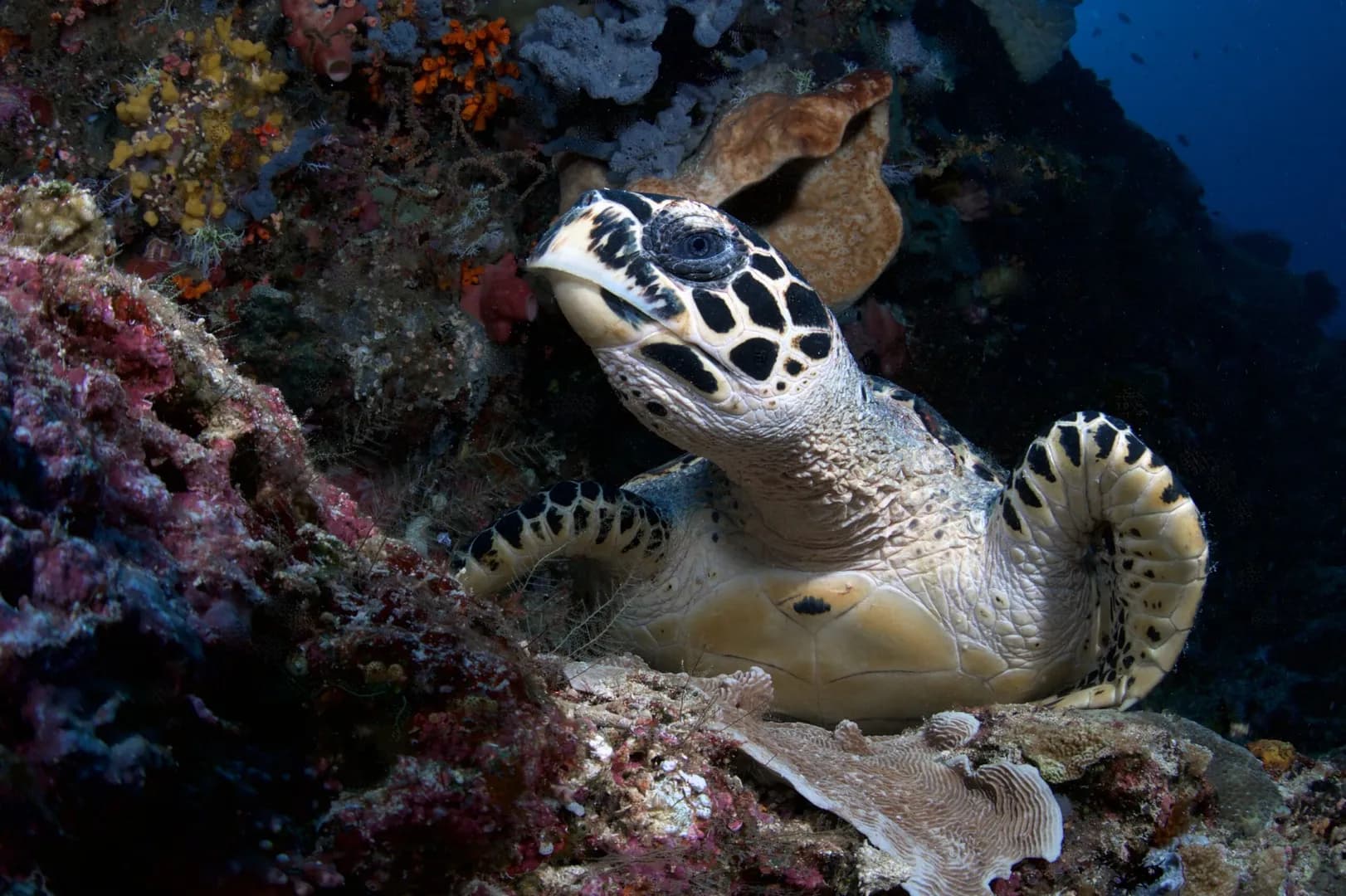Why do Boxer Crabs Carry Anemones and Other Fun Critter Facts

The Lembeh Strait is world renowned for being home to some of the most unusual, unique and rare critters found anywhere on the planet. When diving in Lembeh it’s not only about spotting the critters that you most want to see (although that is a large part of it). The Lembeh Strait offers near perfect conditions for passively observing even the most cryptic of critters and their behavior. If you thought that some of the critters in Lembeh were bizarre in appearance, that’s nothing compared to some of their behavioural traits and habits that are on display on a daily basis underwater!
In this article we take a look at some of the most unusual patterns of behaviour that we see from our critters when diving in the Lembeh Strait and why…
Why do Boxer Crabs Carry Anemones?
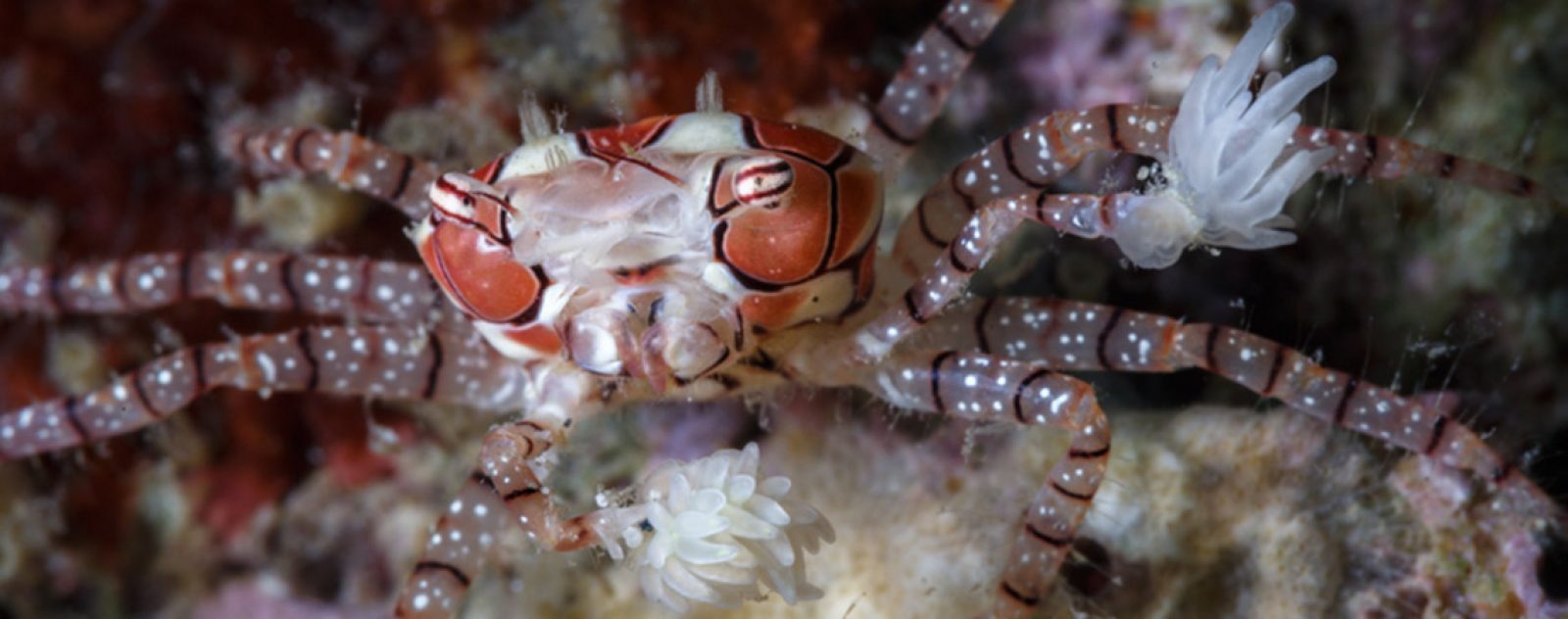
Boxer Crabs (Lybia tesselata) are also known as Pom-pom crabs and both common names (Boxer and Pom-pom) relate directly to this critters habit of carrying sea anemones on its claws. Sea anemones may be beautiful but the tentacles are covered in stinging cells called cnidocytes which can really pack a punch (no pun intended!)
Whenever the crab is moving it wields the sea anemones in horizontal motions to ward off predators. If a predator directly threatens the crab, it will respond by adopting a forward position and begin punching at its aggressor with its anemone-clad claws – the ultimate defence mechanism!
There is a mutually beneficial relationship between the boxer crab and the sea anemones. In return for the sea anemones’ defence, the boxer crab feeds the anemones. The crab makes use of the anemone’s tentacles to collect food particles from the water column and then subsequently digests the debris and provides adequate meals in return.
Note: It is frequently cited that boxer crabs and sea anemones form one of the most unusual and unique symbiotic relationships found in the underwater realm.
Why are Ribbon Eels Different Colors?
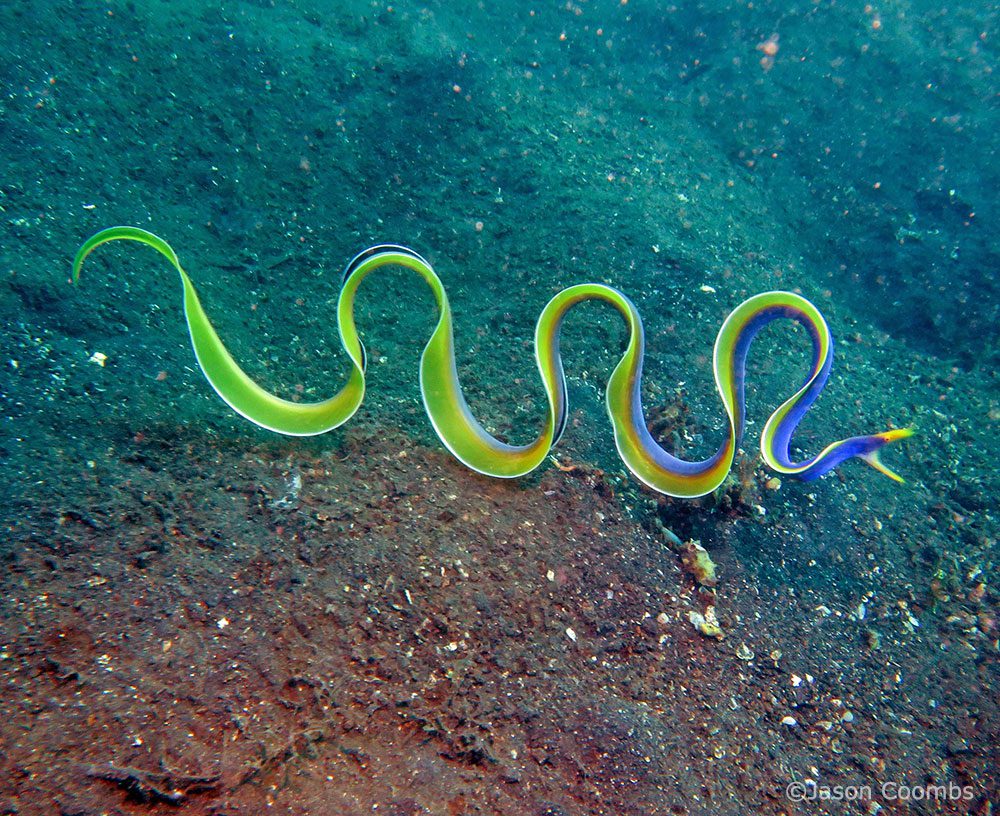
There are many times when divers return from dives only to say, “I saw a black ribbon eel!’, or, ‘Did you see the blue ribbon eel or the yellow ribbon eel?”.
There are three main color stages of ribbon eels (Rhinomuraena quaesita): black with a yellow dorsal stripe, electric blue with a yellow dorsal stripe, and a completely yellow eel. These are not three different species – they are all the same species that changes color as it matures. However, color is not all that changes as this eel develops, its gender changes too! Here are the gender and color changes in the life cycle of a ribbon eel.
Stage 1: Gender neutral. Black with a pale to yellow dorsal stripe.
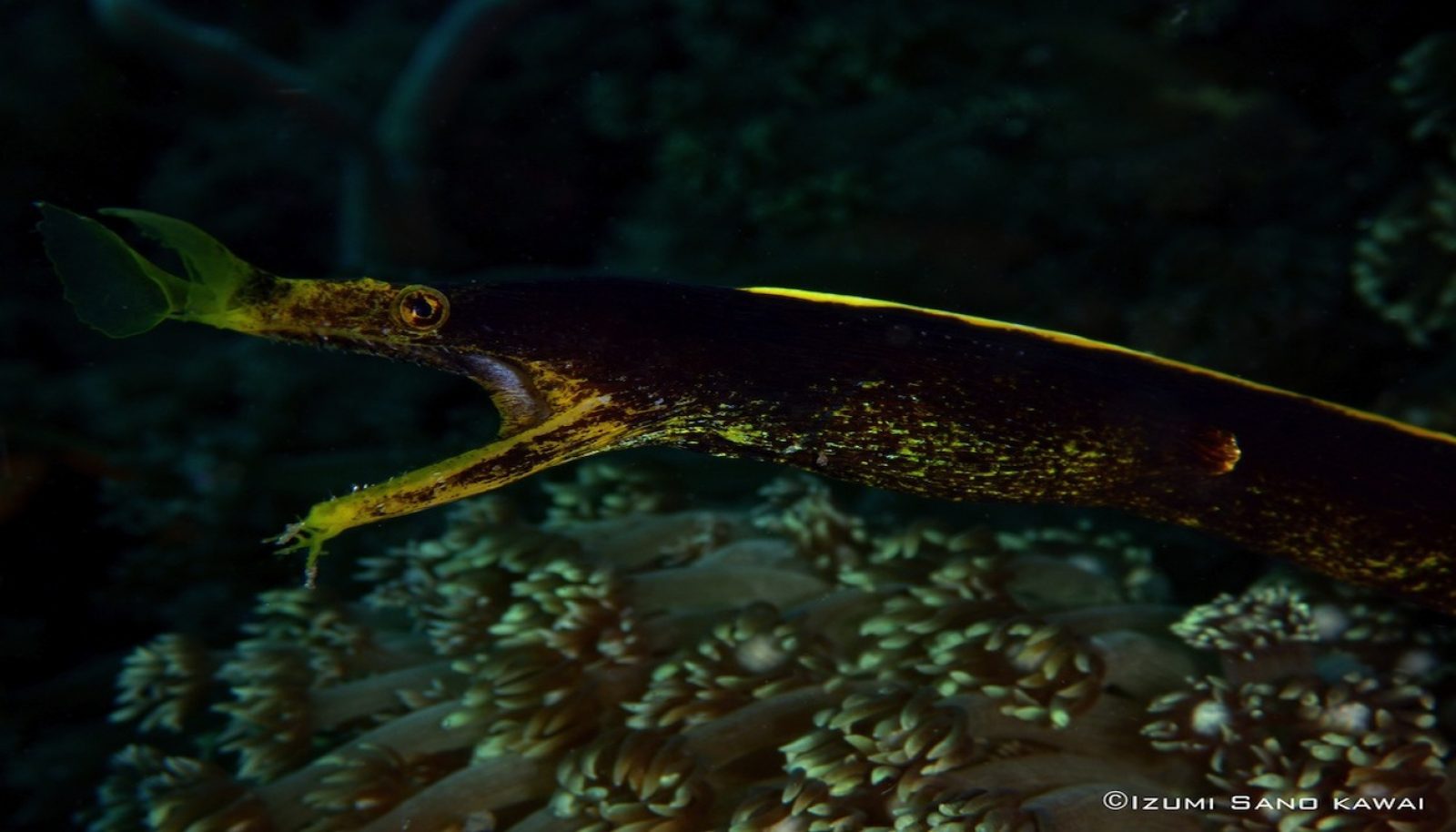
Stage 2: Male. Electric blue with a bright yellow dorsal stripe.
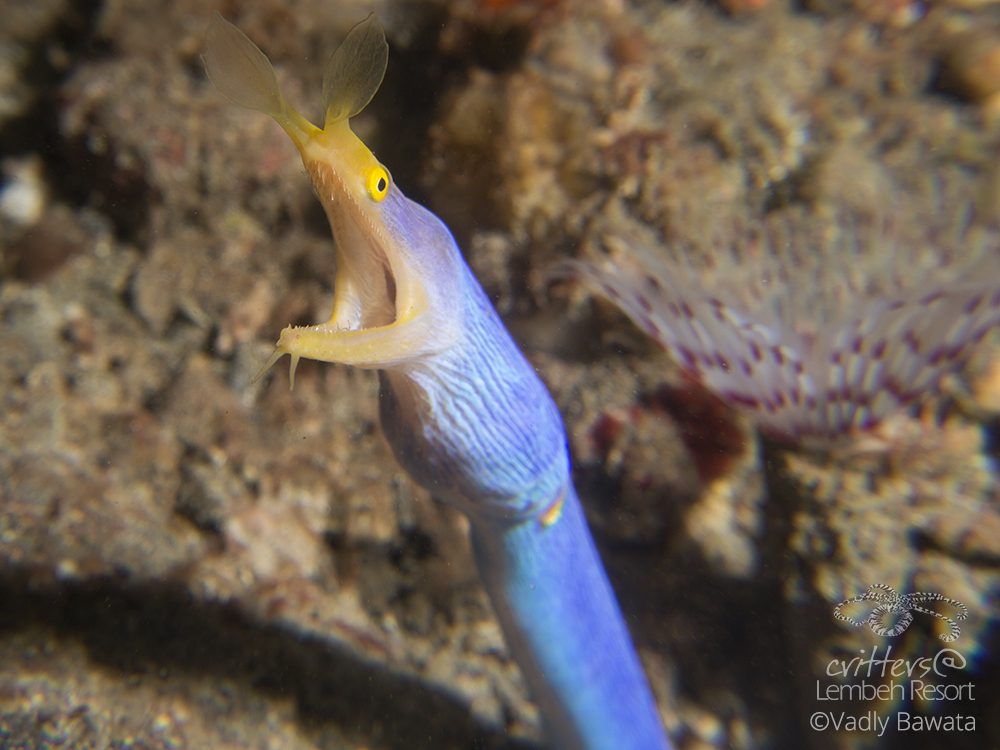
Stage 3: Female. Completely yellow body.
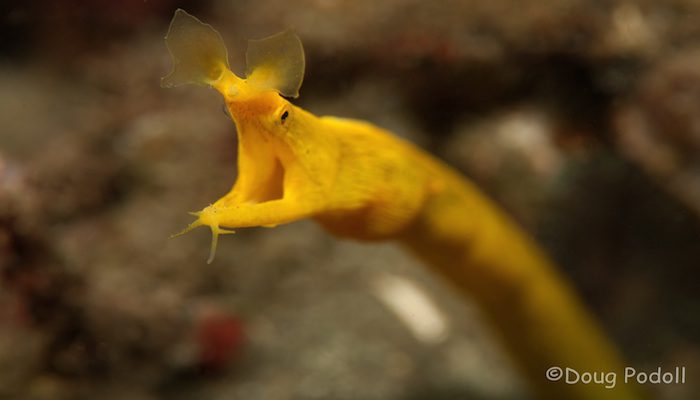
Note: When a ribbon eel is transitioning between stages it’s possible to see four colors on display at the same time; black, yellow, white, and blue!
Ribbon Eel Fact: Did you know that ribbon eels have been reported to live over 20 years in their natural habitats?
Why Do Sponge Crabs Wear Hats?
Sponge crabs (Pseudodromia latens) are often one of the most comical looking critters that we spot when night diving in the Lembeh Strait.
This species is thought to be the first crustacean species to use ‘external items’ to camouflage itself – making it the original decorator crab. Unlike the decorator crab species that followed, the sponge crab does not use an array of items to stick on its shell, instead it limits itself to pieces of live sponge corals which it doesn’t only find, it cuts out from the sponge itself using its pincers. Once the crab has fashioned a piece of sponge to the correct size it holds it in place on top of its head (much like a bonnet) to disguise and protect itself as it moves around. When stationary, if the crab sits flat on the sea bed, predators will only see the sponge under which it is hiding. The sponge isn’t only a disguise however, sponges are known to have chemical defences and many sponge species produce toxins to deter predators.
Sponge crabs are quite particular in terms of ‘fit’ and will carefully select sponges which will fit snuggly around the top of their shells. These crustaceans are known to utilize a wide range of sponges, however, researchers have found that individual crabs may have particular choice favorites!
Upside-down Jellyfish Crabs – Why?
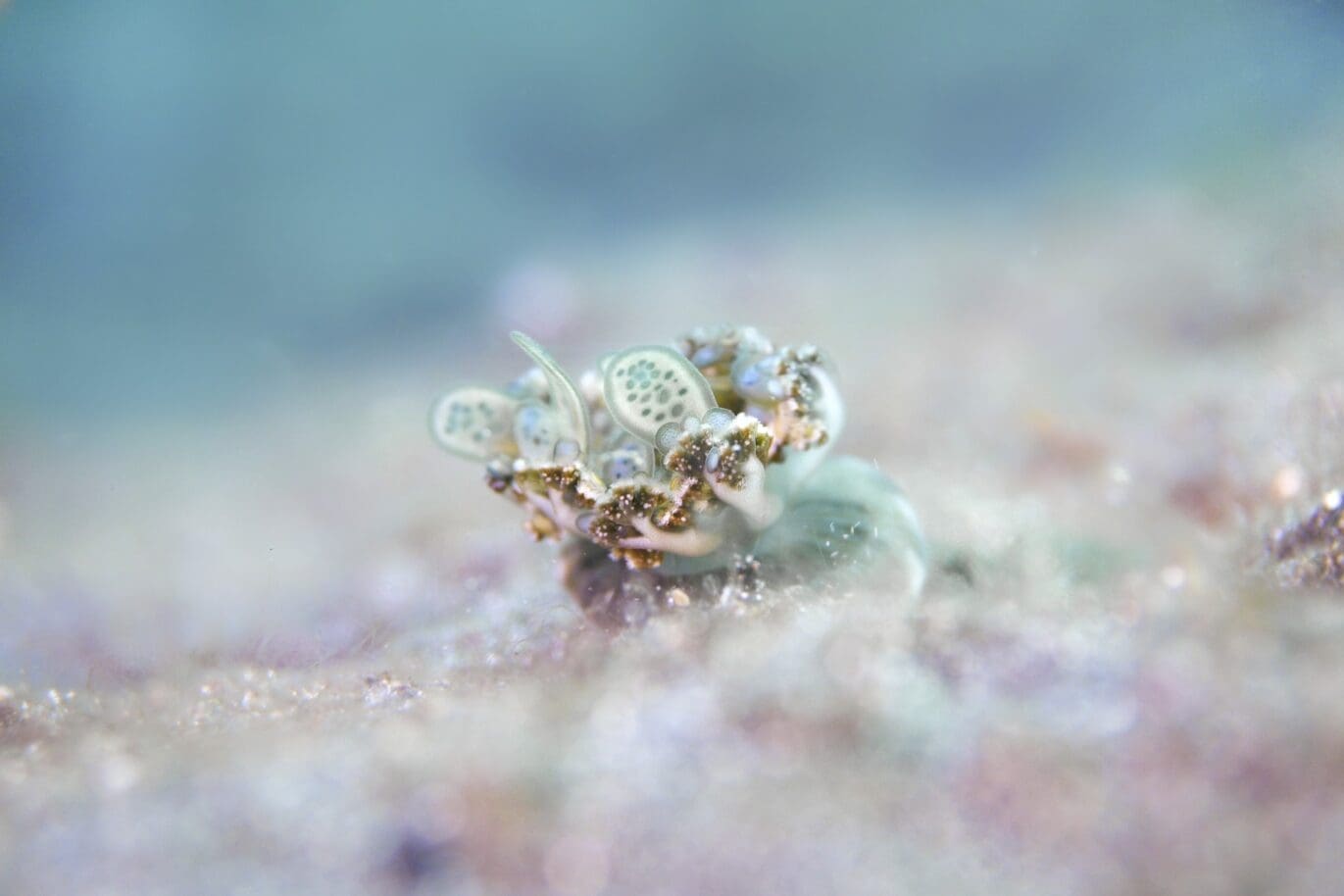
Upside-down jellyfish spotted at Lembeh strait
Even just the common name of this species ‘upside down jellyfish crab’ will have several people raising their eyebrows! To begin with, upside-down jellyfish (Cassiopeia Sp.) are actually a thing! This type of jellyfish has symbiotic algae in its tentacles that photosynthesize and provide the jellyfish with extra nutrients. To ensure this exchange, the jellyfish inverts itself and plants itself upside down on the seafloor to keep its tentacles pointed upward to catch the maximum amount of sunlight required for the algae.
The upside-down jellyfish crab does not therefore turn the jellyfish upside down, it is merely an opportunistic carrier crab (Dorippidae Sp.) that picks up the (already inverted) jellyfish and attaches it to their shell for camouflage. An additional benefit to the crab is that the jellyfish tentacles are stinging which provides them with another line of defence from predators.
While the crab gains a disguise and an additional defence mechanism from the jellyfish, the jellyfish gain too – it gains a free room that allows it to effortlessly maintain its inverted style of living with the maximum exposure to sunlight possible in order for the algae to keep it well nourished.
Note: Unlike most symbiotic relationships that involve two species, this is a three way exchange between the algae and the jellyfish and between the jellyfish and the carrier crab.
How do Blind Shrimp Survive without Eyesight?
Aside from apex predators, for most species of marine life their underwater environment is a highly competitive arena in which if they are not hunting, they are being hunted. How then does a tiny pistol shrimp (Alpheidae Sp.), with extremely limited vision, dig itself a burrow and survive against a host of potential predators?
To ensure its survival, the shrimp forms a symbiotic relationship with a goby partner. Between the pair they will forage together and build a burrow together. While the shrimp may not be able to see, it can dig – a technique that the goby fish is incapable of mastering. Similarly the shrimp cannot see well enough in order to defend or hide itself from predators whereas the goby has excellent vision.
These unlikely pairs usually form long term relationships. The shrimp will dig a burrow for the pair to live inside. While it is busy excavating sand, the goby will stand on guard and maintain constant contact with the shrimps antennae. When a potential predator is approaching, the goby will warn the shrimp (with a neat flick of its tail fin) thereby giving the shrimp advance warning to remain hidden in the burrow. The goby and the shrimp will sleep together every night in their burrow and the goby will also use the burrow as a safe space for mating.
Marine Life Fact: Over 120 different species of goby fish have been found to engage in symbiotic relationships of this nature with numerous species of Apheid shrimps.
Emperor Shrimp and Ceratosoma Nudibranch Chariots
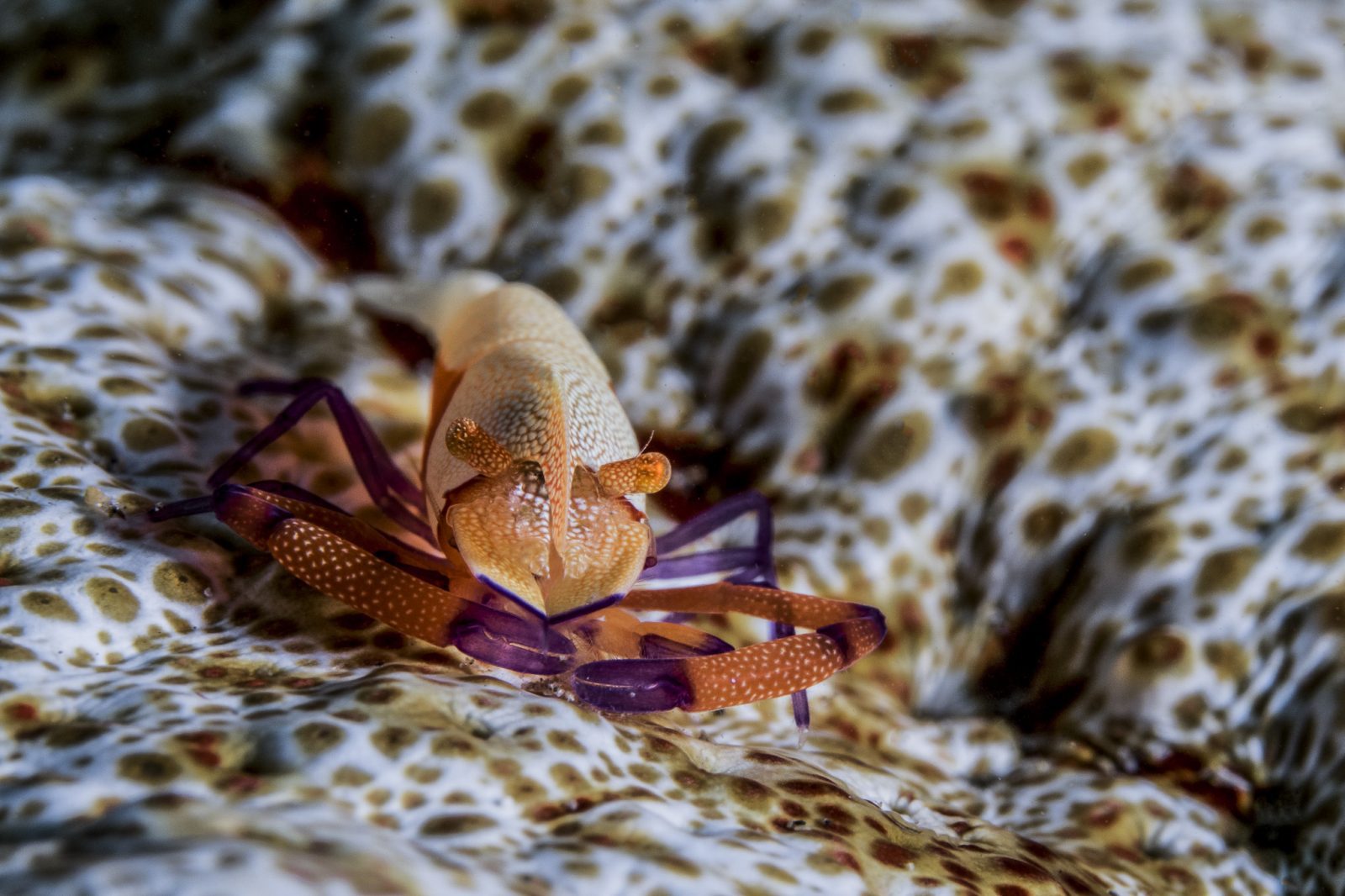
The exquisite looking Emperor shrimp (Periclimenes imperator) is well known for inhabiting sea cucumbers and sea stars which it keeps healthy and free from parasites in return for a free meal. This is one of the most common of all symbiotic relationships that occurs between multiple species of cleaner shrimps and their hosts.
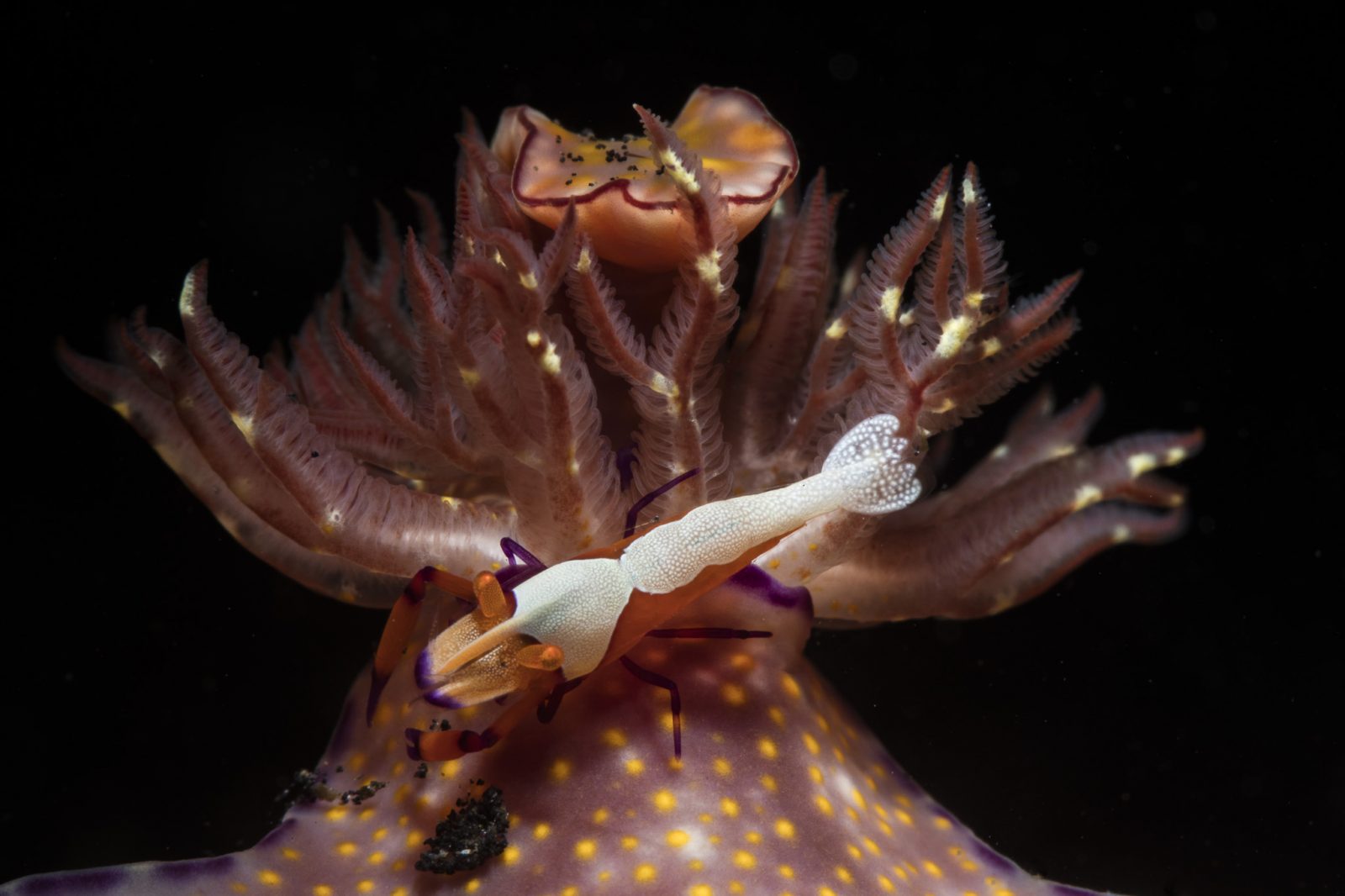
However, the clever little emperor shrimp has another type of symbiotic relationship with nudibranch species, in particular with T-bar nudibranch (Ceratosoma Sp.). While sea stars and sea cucumbers are almost entirely stationary, emperor shrimp like to move around from feeding ground to feeding ground. To achieve this they need transport – and that’s where the nudibranch lends a helping hand.
Emperor shrimp are often spotted perched on top of these nudibranch as they ‘ride’ them from place to place. Of course, they will also clean the nudibranch along the way in order to pay for their ride!
Going Coconuts for Octopus
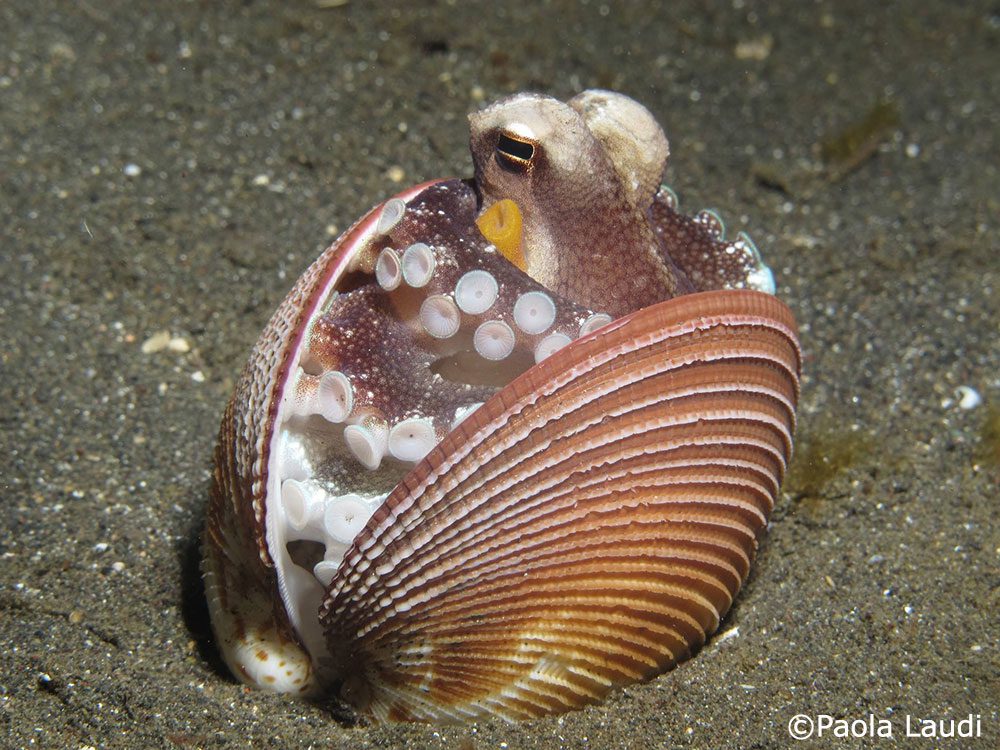
The coconut (or veined) octopus is one of the most iconic critters found in the Lembeh Strait. This intelligent cephalopod takes its name from its habit of occupying coconut husks when unoccupied bi-valve shells are in short supply.
Known for its ability to utilise tools, the coconut octopus is able to adapt when neither shells nor coconuts are available. This species can be incredibly creative when it comes to making a home for itself. It will choose from whatever it finds available on the sea floor – usually it will forage for something to hieone to hide inside and the other to use as a door, or seal.
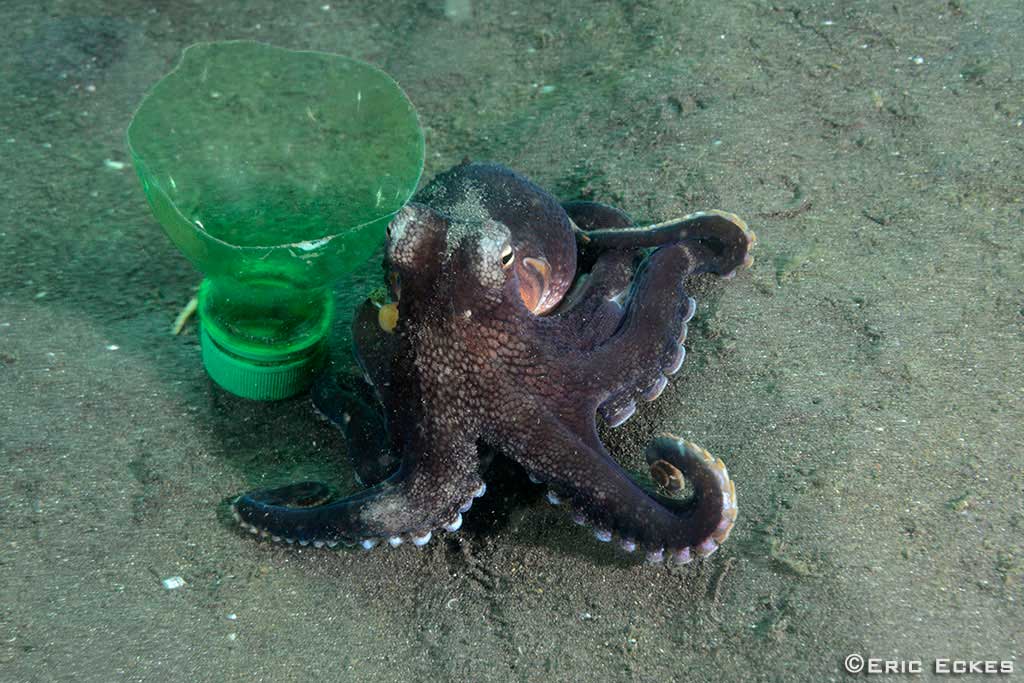
Perhaps one of the cleverest traits of this octopus is its ability to carry items from one place to another. If it finds an item to hide inside it will look around for something to create a door with. Once it has identified a suitable item it will pick it up underneath its mantle and ‘walk’ on extended arms back to its new home, insert itself inside, and close the door behind it!
Critter Behavior and Underwater Photography
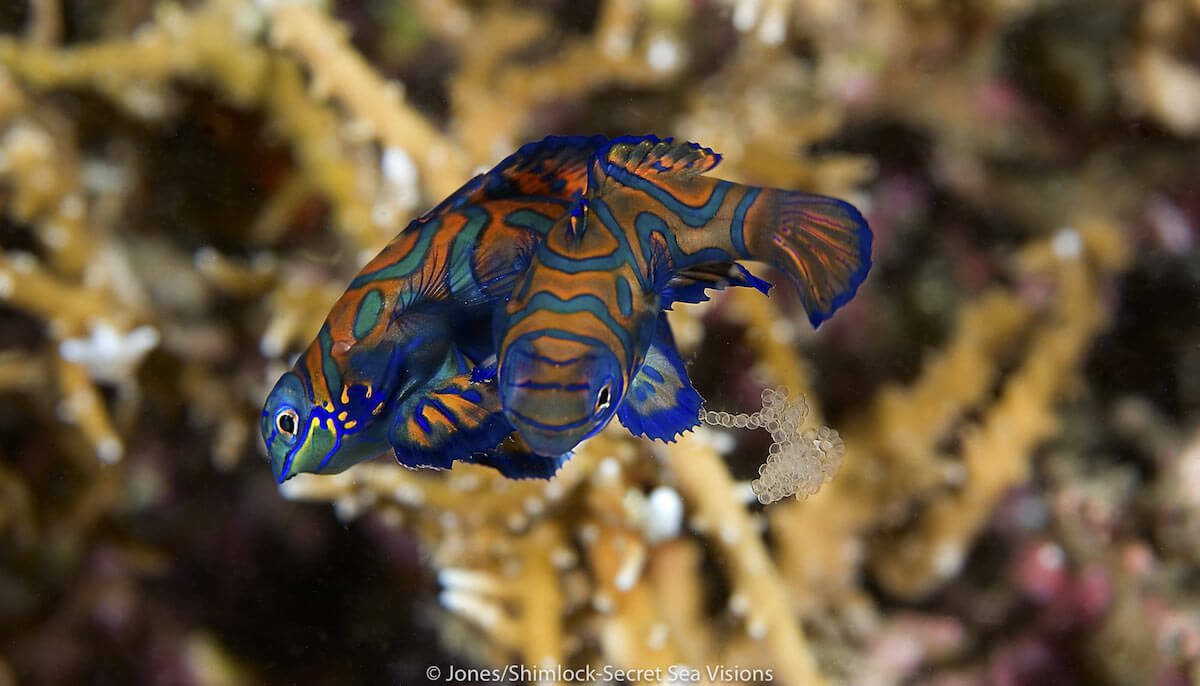
An incredible shot of Mandarin fish mating, and eggs in Lembeh
Some of the ‘best’ and certainly the most interesting images taken of critters in the Lembeh Strait almost always include an element of behavior. Whether it is a mantis shrimp carrying eggs, a pair of cuttlefish mating, cleaning in process, or a frogfish hunting, these images all tell a story about the subject(s) in the image!
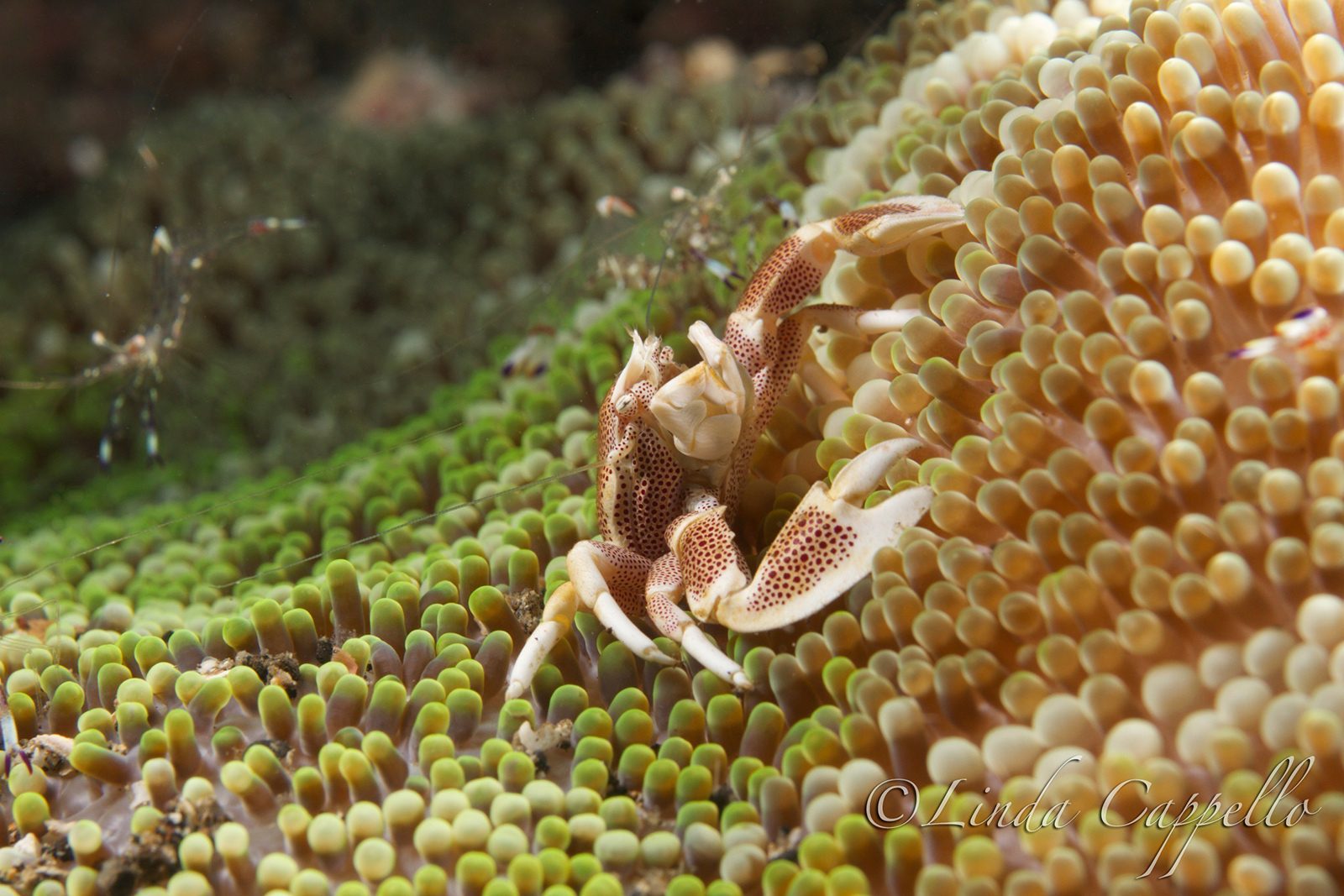
If you would like to develop your underwater photography skills and learn more about capturing storytelling images, visit our Backscatter Authorized Photo Center during your stay. Our Photo Center Assistants are all accomplished underwater photographers and are always happy to help, provide guidance and recommend camera and lighting accessories that you may wish to rent, or purchase.
For a more intensive approach to enhancing your underwater imaging, join us for a photography workshop. Throughout the year we host a number of workshops co-hosted by world-class underwater photography professionals. The highlight of our photography calendar year is in January when we welcome not one but three world class professional shooters to host our annual Capturing Critters in Lembeh Underwater Photography Workshop.
Capturing Critters in Lembeh Underwater Photography Workshop 2025
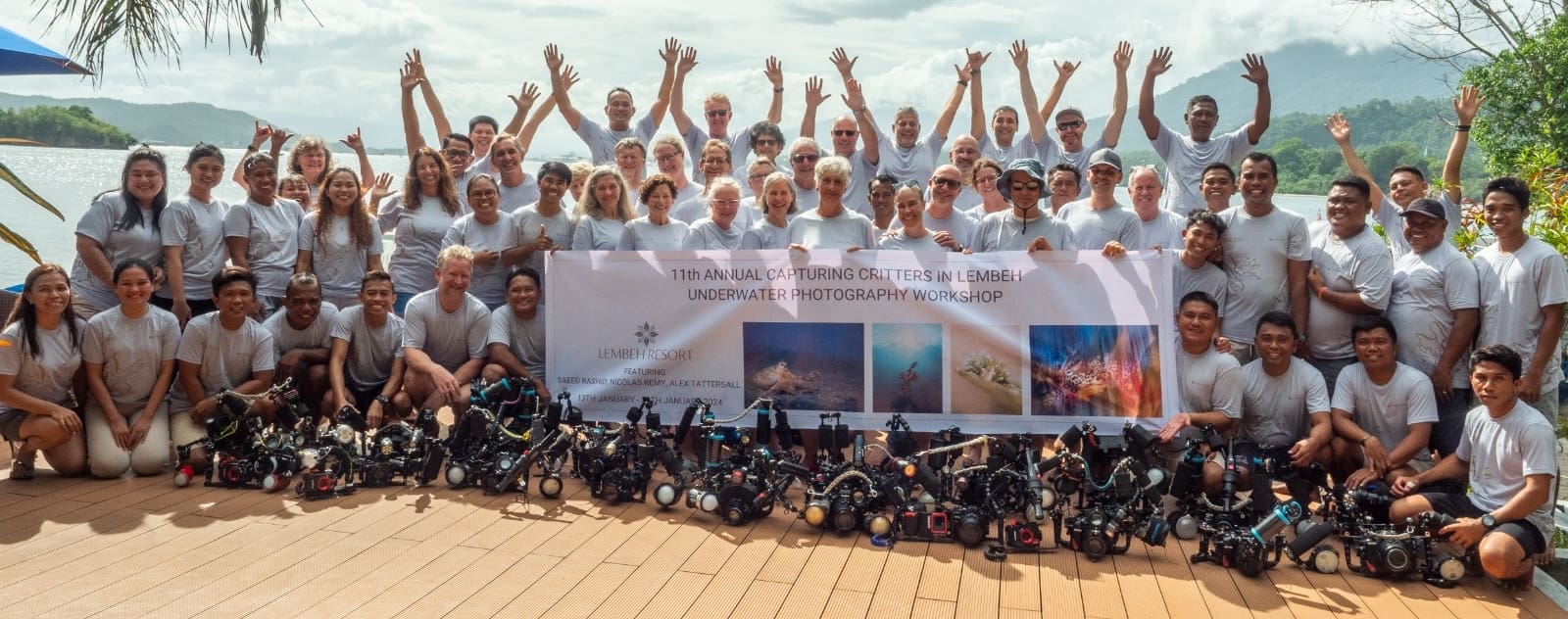
Our annual Capturing Critters in Lembeh Underwater Photography Workshop is back in January 2025. We are extremely excited to welcome Ron Watkins (USA), Paul Duxfield (UK), and Renee Capozzola (USA) as the three visiting Photo Pros to Lembeh Resort.
Join us in Indonesia for our 12th annual Capturing Critters Workshop and experience North Sulawesi’s most iconic dive sites while enjoying some spectacular extras.
For more information about our 2025 workshop take a look at our Capturing Critters in Lembeh Underwater Photography Workshop page.
BOOK YOUR STAY WITH LEMBEH RESORT
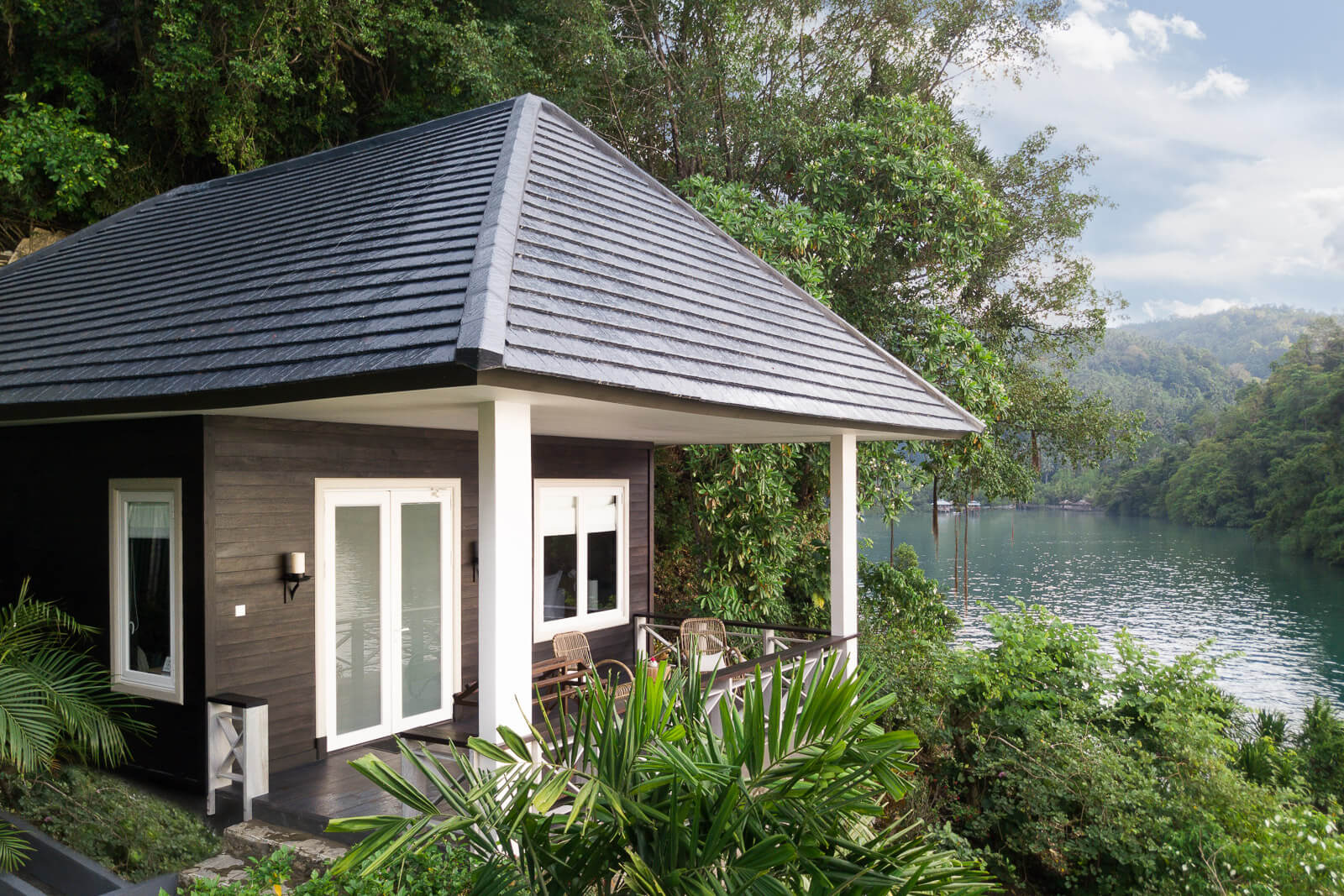
Luxury Cottage accommodation at Lembeh Resort
If you are ready to book your stay with us – or would like more information about our rates and availability contact us at reservations@LembehResort.com.
Our reservations team looks forward to assisting you!
FURTHER READING
If you enjoyed reading this article, you may also enjoy some of our other articles about marine life found in the Lembeh Strait – complete with tips for photographers too!


